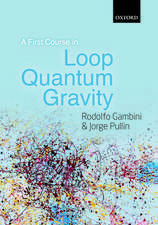Computational Contact and Impact Mechanics: Fundamentals of Modeling Interfacial Phenomena in Nonlinear Finite Element Analysis
Autor Tod A. Laursenen Limba Engleză Hardback – 11 mai 2003
| Toate formatele și edițiile | Preț | Express |
|---|---|---|
| Paperback (1) | 952.72 lei 6-8 săpt. | |
| Springer Berlin, Heidelberg – 14 dec 2010 | 952.72 lei 6-8 săpt. | |
| Hardback (1) | 958.07 lei 6-8 săpt. | |
| Springer Berlin, Heidelberg – 11 mai 2003 | 958.07 lei 6-8 săpt. |
Preț: 958.07 lei
Preț vechi: 1168.38 lei
-18% Nou
Puncte Express: 1437
Preț estimativ în valută:
183.33€ • 196.04$ • 152.85£
183.33€ • 196.04$ • 152.85£
Carte tipărită la comandă
Livrare economică 18 aprilie-02 mai
Preluare comenzi: 021 569.72.76
Specificații
ISBN-13: 9783540429067
ISBN-10: 3540429069
Pagini: 476
Ilustrații: XV, 454 p.
Dimensiuni: 156 x 234 x 31 mm
Greutate: 0.81 kg
Ediția:1st ed. 2002. Corr. 2nd printing 2003
Editura: Springer Berlin, Heidelberg
Colecția Springer
Locul publicării:Berlin, Heidelberg, Germany
ISBN-10: 3540429069
Pagini: 476
Ilustrații: XV, 454 p.
Dimensiuni: 156 x 234 x 31 mm
Greutate: 0.81 kg
Ediția:1st ed. 2002. Corr. 2nd printing 2003
Editura: Springer Berlin, Heidelberg
Colecția Springer
Locul publicării:Berlin, Heidelberg, Germany
Public țintă
ResearchDescriere
Many physical systems require the description of mechanical interaction across interfaces if they are to be successfully analyzed. Examples in the engineered world range from the design of prosthetics in biomedical engi neering (e. g. , hip replacements); to characterization of the response and durability of head/disk interfaces in computer magnetic storage devices; to development of pneumatic tires with better handling characteristics and increased longevity in automotive engineering; to description of the adhe sion and/or relative slip between concrete and reinforcing steel in structural engineering. Such mechanical interactions, often called contact/impact in teractions, usually necessitate at minimum the determination of areas over which compressive pressures must act to prevent interpenetration of the mechanical entities involved. Depending on the application, frictional be havior, transient interaction of interfaces with their surroundings (e. g. , in termittent stick/slip), thermo-mechanical coupling, interaction with an in tervening lubricant and/or fluid layer, and damage of the interface (i. e. , wear) may also be featured. When taken together (or even separately!), these features have the effect of making the equations of mechanical evolu tion not only highly nonlinear, but highly nonsmooth as well. While many modern engineering simulation packages possess impressive capabilities in the general area of nonlinear mechanics, it can be contended that methodologies typically utilized for contact interactions are relatively immature in comparison to other components of a nonlinear finite element package, such as large deformation kinematics, inelastic material modeling, nonlinear equation solving, or linear solver technology.
Cuprins
1 Introduction.- 2 Finite Element Formulations in Nonlinear Solid Mechanics.- 3 The Kinematically Linear Contact Problem.- 4 Continuum Mechanics of Large Deformation Contact.- 5 Finite Element Implementation of Contact Interaction.- 6 Tribological Complexity in Interface Constitutive Models.- 7 Energy-Momentum Approaches to Impact Mechanics.- 8 Emerging Paradigms for Contact Surface Discretization.- References.
Textul de pe ultima copertă
This book comprehensively treats the formulation and finite element approximation of contact and impact problems in nonlinear mechanics. Intended for students, researchers and practitioners interested in numerical solid and structural analysis, as well as for engineers and scientists dealing with technologies in which tribological response must be characterized, the book includes an introductory but detailed overview of nonlinear finite element formulations before dealing with contact and impact specifically. Topics encompassed include the continuum mechanics, mathematical structure, variational framework, and finite element implementations associated with contact/impact interaction. Additionally, important and currently emerging research topics in computational contact mechanics are introduced, encompassing such topics as tribological complexity, conservative treatment of inelastic impact interaction, and novel spatial discretization strategies.
Caracteristici
The book includes an introductory but detailed overview of nonlinear finite element formulations before dealing with contact and impact specificially
Includes supplementary material: sn.pub/extras
Includes supplementary material: sn.pub/extras










